Complete ID Checks
You’ll need to complete some routine ID checks. This can involve checking details, providing identification, and providing proof of address. TBI Law can help you gather the necessary information.
If buying a house: arrange your mortgage
You should have a mortgage offer in principle before undertaking the conveyancing process. At this stage, you should inform the lender that you’ve made an offer and the valuation. They’ll also want some details about the property. You'll also want to make sure you have all your documentation in check when buying a house, ready for your solicitor.
Arrange a surveyor (for buyers)
Your mortgage lender will send their own surveyor to value your property. It’s recommended to arrange your own home buyer’s survey. A home buyer’s survey goes into significantly more detail than the mortgage lender’s survey and can help to identify any potential issues that may influence your buying decision.
Provide instructions to go ahead
Providing instructions to your conveyancer expert gives them the green light to begin the process. The information you need to provide will depend on whether you’re buying or selling the property. If selling, you’ll provide a form outlining details about the property and complete the fixtures, fittings, and contents form.
Contract pack and property searches
At this stage, the contact pack — which includes the property information forms, Land Registry documents, and the contact of sale — will be sent to the buyer’s solicitor. Once this is in their possession, the professional managing the buyer’s conveyancing process will perform property searches on various registries, including Environmental, Drainage, and Local Authority.
Issue of contract and signing of documents
At this stage, you’ll receive a legal report from your conveyancer. This will outline all the enquiries raised between the two conveyancers during the process, as well as answers. You’ll also receive a draft of the contract and the transfer, which will be sent to both parties to sign. As this is a legal document, it must be signed in the presence of an independent, over 18 witness.
Buyers will receive a firm offer from their mortgage lender. They’ll ask the conveyancer to verify your details and check special conditions. Once they have, you’ll be sent the mortgage deed by your conveyancer. Simply sign it — again, in the presence of an independent, over 18 witness — and send it back to your conveyancer.
Pay the deposit
At this stage, the buyer is ready to pay the deposit. If you’re a seller who is buying another property, then the conveyancer will typically just use the received money to pay your outstanding deposit.
Make sure you’re insured
Buildings insurance will be required by your mortgage lender. Plus, it’ll also function to protect your investment. Make sure you have insurance from the date of the exchange.
Exchange of contracts
The exchange of contracts marks a significant step in the homebuying process. This outlines that both buyer and seller have agreed to complete the purchase on completion day. This step is completed by both conveyancers, who usually use the telephone to exchange contracts. You’ll receive the completed contracts in the mail.
Completion day
The outstanding money owed will be transferred from the buyer to the seller on completion day. Once the solicitor has been informed that the money has arrived, the keys will be released and the property will not be under ownership of the buyer.
For Buyers: Informing Land Registry
Once the sale has been completed, your conveyancer will inform the land registry that you’re now the owner of the property, as well as provide details of the mortgage lender. They’ll also pay any Stamp Duty Land Tax if required.
Deed of title
Sometime after the sale — usually a few weeks — you’ll receive a copy of the deed of ownership, which shows you own the property. If you’re the seller, you’ll receive a document that confirms you are no longer in ownership of the property.
How long does conveyancing take?
There’s no getting around it — you’ll need to go through the conveyancing process when buying or selling a property. How long conveyancing takes will depend on a variety of factors, but you’re usually looking at somewhere between 8 - 16 weeks.
One way to speed up the process is to work with a firm like TBI. In fact, if you’re asking yourself ‘what is a conveyancer there for?’ — the answer is not only to ensure all the paperwork is completed correctly but also that the process moves as quickly as possible. At TBI, our extensive experience means there are no unnecessary delays.
In general, each stage of the conveyancing process takes approximately:
• Pre-Contract: Two Weeks
• Mortgage Offer: Four Weeks
• Draft Contract: Two - Eight Weeks
• Contract Exchange - Completion: One - Two Weeks.
How much does conveyancing cost?
We’ve already outlined ‘what is a conveyancer’ and why you should use one when buying or selling a property. As with all professionals, conveyancers will charge for their services. How much it’ll cost you will depend on a number of factors. For example, whether you’re buying and selling a property, or if you’re just selling.
In general, you can expect to pay anywhere from £800-£2000. Click here to get a free estimate for our conveyancing services.
Parties Involved in Conveyancing
There are a lot of parties involved in conveyancing. In fact, you can think of it as involving everyone but the movers! Let’s take a closer look at the main players.
Buyer
This refers to the person (or sometimes entity) that intends to purchase the property. They’ll undertake the conveyancing process once their offer has been accepted and they have proof of mortgage (or other funding).
Seller
This refers to the person (or, again, entity) selling the property. They’ll provide documentation and details about the property, including the title deed, to their conveyancer, who will act on their behalf.
Solicitor
The solicitor is the professional in charge of the conveyancing process, either on behalf of the buyer or the seller, each of whom will have their own conveyancing representative. The solicitor is in charge of ensuring that the property transference is legally binding.
Estate Agents
Estate agents help sellers find buyers for their properties. They also assist with the sale negotiations. Buyers may hire an estate agent to find a property or act on their behalf.
Mortgage Lender
A mortgage lender provides the money to buy a property, if required. The lender also performs their own checks to ensure the valuation of the property is correct. The mortgage lender typically imposes strict requirements on the buyer; for instance, having building insurance.
UK Conveyancing Law
Conveyancing is a legal process that ensures the transference of property is done so in a legally compliant manner. Some of the key legal elements of conveyancing law include:
Legal Framework
Some of the key legislation that dictates property transactions in the UK include the Land Registration Act 2002 and the Law Of Property Act 1925.
Title Registration
The Land Registry is in charge of recording all property ownership within the UK. This registry provides proof of ownership for all land and property in the country.
Searches and Investigations
A conveyancer will perform various searches throughout the conveyancing process. These searches will be made with local authorities and environmental agencies to highlight any potential issues with a property. Check out our guide for more info about what conveyancing searches are.
Contracts and Documentation
Conveyancers prepare and review documents relevant to the property transference process. These ensure that their client’s rights have been correctly documented.
Financial Aspects
Property transactions typically involve the transference of large sums of money, which are managed by conveyancers. This includes how and when payment for the property will be made.
Stamp Duty Land Tax (SDLT)
Conveyancers pay Stamp Duty Land Tax on the seller’s behalf. They can also help assess and minimise the seller’s SDLT liabilities, as well as submit forms to tax authorities.
Professional Representation
Conveyancers do more than handle paperwork; they also act on behalf of their clients, ensuring that their interests are fully protected.
Law of Property Act 1925
The Law of Property Act 1925 helped to modernise property transactions, as well as make them easier to process. The act was revolutionary at the time, and continues to have a big impact on the conveyancing process. Let’s take a look at how.
Legal Estates and Interests
The Property Act of 1925 helped to develop various legal property concepts, including leasehold estates, and also outlined how properties should be transferred from one owner to another.
Registered Land
The act laid the pathway for the creation of The Land Registry, which functions as a centralised record of land ownership.
Covenants and Easements
The act helped to clarify covenants and easements, which provided a clearer understanding of the obligations of and rights afforded to property owners in the UK.
Mortgages and Charges
The Law Of Property Act 1925 provided legal rights to both mortgage lenders and borrowers.
Conveyancing Process
The Act made the conveyancing process more straightforward, allowing for deeds to be transferred in a more systematic way.
Land Registration Act 2002
The Land Registration Act 2002 aimed to bring UK property law into the modern era. Some of the key features of the act include:
Compulsory Registration
Following the act, it was mandatory for freehold land, long leases, and other property or land transactions to be included in The Land Registry.
Electronic Conveyancing
The Act made it possible to perform many of the conveyancing steps via electronic means. For example, collecting electronic signatures.
Priority and Indemnity
The Land Registration Act determined priority for registered interests, in instances where there were opposing claims. For instance, mortgages and leases.
Overriding Interests
Overriding interests refer to matters that are not legally registered, yet still affect various parties. For instance, tenants who are living in a property being sold.
Adverse Possession
The Land Registration Act 2002 changed how long a squatter must live in a property before they are legally entitled to ownership.
Land Registration Rules
Finally, the act impacted land registration rules, providing a more detailed and streamlined process about how and when property owners must register their properties/land with the centralised registry.
Summary
Conveyancing handles the legal side of property transference. Once everything is done and dusted, the property will be legally owned by the buyer — and it’ll be all thanks to the conveyancing process.
While individuals are free to go through the conveyancing process on their own, it’s best to work with a professional. That’ll ensure that everything is legally binding, you’re well protected, and there are no unnecessary delays that can hold up the process.
If you’re buying or selling a property, then don’t hesitate to get in touch with our team here at TBI. We have a department of expert conveyancing solicitors who can help you throughout the entire property purchasing or selling process. With offices based in Hartlepool, Barnard Castle, Stockton, and Wynyard, as well as being able to carry out remote appointments, we can help you no matter where you are.
You can contact our conveyancing team by calling 0333 210 1101 today.




